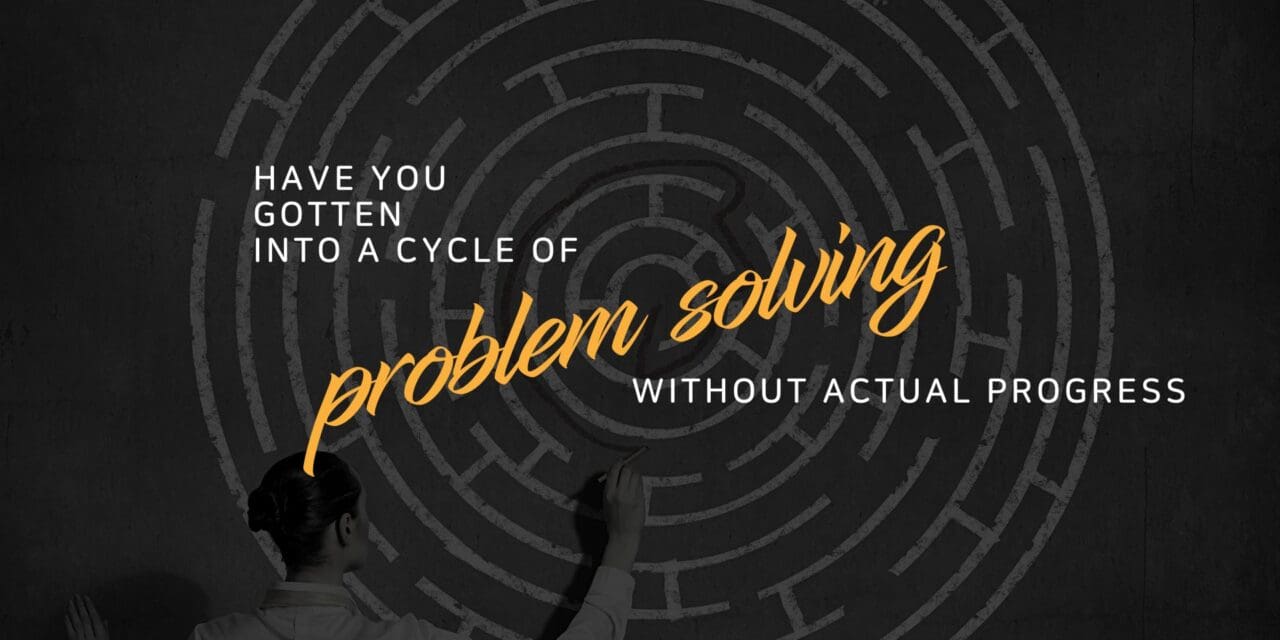Sure, running a business involves solving problems – some of which are good and some of which can be a distraction.
There are the problems which your business inherently solves through the products and services it provides to customers.
Then there will be the inevitable problems within your business that crop up from time to time, such as staff shortages, human error, or technological breakdowns.
But if you’re always on the back foot, focussing on a current crisis, there’s a good chance you’re distracted from making the progress you’d like to see within your business, such as growth, increased sales or the stress-free lifestyle you deserve.
So, what can you do if problem-solving is getting in the way of progress? Here we look at the different types of problems that arise in business to how you can ensure you’re focussed on the right area at the right time.
Different types of business problems
In business there are good problems and those which are not so welcome.
By nature, every business is designed to solve a problem on behalf of their ideal customer. In other words you mitigate your customer’s problems with the products and services you provide.
These are good problems to solve as they relate to the need for your product and the service you can offer your ideal client.
The more problems you can effectively solve with your products and services, the more in demand they will be and the more growth potential your business has.
Then there are the problems which distract you from the core focus of your business. And they might crop up in a number of ways , ranging from human error to staff issues, workplace culture problems that see your staff turnover high, or labour and product shortages.
These are problems that take up your time, cost you productivity and prevent you from focussing on the big-picture of business. They might also result in customer dissatisfaction, eroding your client base or your reputation.
The latter problems are also those which deter your business from making progress. They might see you stuck in a perpetual mode of problem solving without creating actual progress.
In other words, you are so busy putting out fires, you can’t focus on the future growth or proactive running of your business.
The good news is, there are ways to break this cycle. And it all comes back to the simple business basics of planning, process, and procedure.
Planning
In business, we talk a lot about planning, but if you’re constantly problem-solving it can feel like the last activity on a lengthy to-do list.
The reality is, good planning prevents problems. It accounts for them before they occur and allows you to create strategies that mitigate issues before and as they arise.
In this case, a series of planning tools come into play, starting with an ongoing awareness of your business’ strengths, weaknesses, opportunities and threats, and extending to disaster management planning where you consider the very worst and develop strategies in case they occur.
A quick SWOT
At every stage of a business’ life, the operator should be acutely aware of an organisation’s strengths, weaknesses, opportunities and threats.
Although these will evolve over the course of your business’ life, understanding your weaknesses and threats allows you to plan for potential problems.
Disaster and recovery planning
Beyond the threats a business is likely to face as part of its day-to-day operations are more specific and damaging threats.
These include major potential problems such as a natural disaster (fire, flood, cyclone), a technological failure, cyber threat, fraud or criminality within the business, and more.
Although unlikely, these ‘disasters’ would have major ramifications for the ongoing operation of a business.
And while the disaster scenarios might differ, the strategies to manage and mitigate that threat are often similar.
For example, a flood may damage your information systems, and a robbery or fire would be likely to do the same. So planning is not about saying what you would do in the case of a fire, it’s about knowing what happens if your vital technology is wiped out.
Planning for this scenario enables you to have a course of action for your business and staff, to mitigate this risk, and find alternative ways to service your clientele.
General planning
Meanwhile, general planning should also take into account what happens if something ‘goes other than right’ and that’s where business basics like process and procedure come into their own.
Process and procedure
In business, we apply process and procedure to any situation that is often repeated and where there is the potential for something to go ‘other than right’.
These processes and procedures are proactive ways of mitigating problems before they arise.
For example, a hiring process outlines the procedure for attracting new talent to your business, interviewing them and onboarding those staff.
Meanwhile, a manufacturing process ensures consistency of your products, while procedures that relate to handling customer enquiries ensure potential clients are channeled through to the right area of your business in the right way.
Each of these processes and procedures eliminates potential problems or serves to address a problem should it occur.
They take the guesswork out of a scenario, creating consistency, offering a solution and reducing the likelihood of the business operator needing to be ‘hands-on’ for every small task that occurs in day-to-day business operations.
The final word
In the interim, an awareness of a businesses’ weaknesses and threats combined with processes and procedures frees up the business owner to concentrate on the bigger picture.
With planning, process and procedure, the business owner is no longer waylaid by small problems as they crop up but can proactively direct their attention towards the future of the enterprise.
Talk Strategy with Clive
With more than 30 years’ experience in mentoring small to medium-sized businesses around Australia. Clive works with company owners and their teams to grow their business and achieve goals through strategic coaching.














